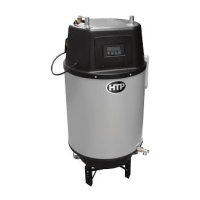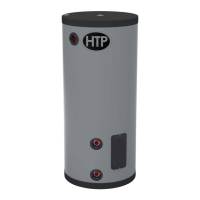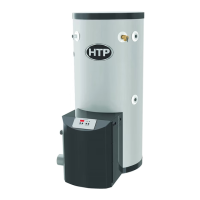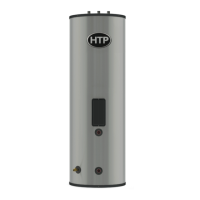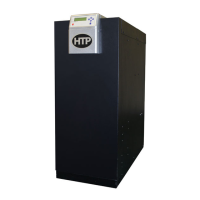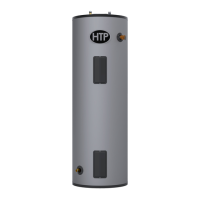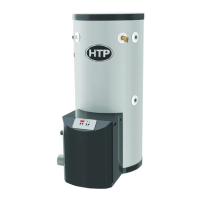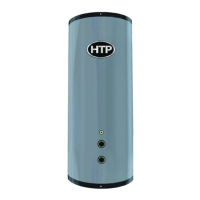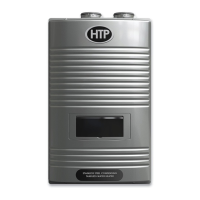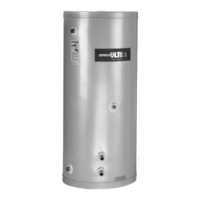LP-605 Rev. 000 Rel. 009 Date 8.16.18
32
LP-325-X
DO NOT PLACE
DRYER NEAR
WATER HEATER
OR BOILER
Figure 25 - Do Not Place Appliance Near Dryer
3. Power Venting, Indoor Combustion Air in Conned or Unconned Space
This heater requires fresh, uncontaminated air for safe operation
and must be installed in a mechanical room where there is adequate
combustion and ventilating air. NOTE: To prevent combustion air
contamination, see Table 6.
Combustion air from the indoor space can be used if the space has
adequate area or when air is provided through a duct or louver to
supply sucient combustion air based on the water heater input.
Never obstruct the supply of combustion air to the water heater. If
the water heater is installed in areas where indoor air is contaminated
(see Figure 26) it is imperative that the water heater be installed as
direct vent so that all combustion air is taken directly from the outdoors
into the water heater intake connection.
Unconned space is space with volume greater than 50 cubic feet per
1,000 Btu/hour (4.8 cubic meters per kW) of the total input rating of
all fuel-burning appliances installed in that space. Rooms connected
directly to this space, through openings not furnished with doors, are
considered part of the space.
Conned space is space with volume less than 50 cubic feet per
1,000 Btu/hour (4.8 cubic meters per kW) of the total input rating of
all fuel-burning appliances installed in that space. Rooms connected
directly to this space, through openings not furnished with doors,
are considered part of the space.
When drawing combustion air from inside a conventionally
constructed building to a conned space, such space should be
provided with two permanent openings: one located 6” (15 cm)
below the space ceiling, the other 6” (15cm) above the space oor.
Each opening should have a free area of one square inch per 1,000
Btu/hr (22cm
2
/kW) of the total input of all appliances in the space,
but not less than 100 square inches (645cm
2
).
If the conned space is within a building of tight construction, air for
combustion must be obtained from the outdoors as outlined in the
Venting section of this manual. See Figures 27 and 28.
Model Water Heater Capacity Outside Air Area Inside Air Area Minimum Required Air Volume
75F / 76F Max. 75,000 Btu/Hr. 20 sq. in. 75 sq. in. 3,750 cu. ft.
100F Max. 100,000 Btu/Hr. 25 sq. in. 100 sq. in. 5,000 cu. ft.
Table 14 - Minimum Air Supply to Water Heater
Insucient air supply used with a Power Vented appliance may
cause the building to experience negative pressure inside.
Negative pressure is not allowable by most building codes and
can cause back drafting of cold air from outside through the unit,
potentially freezing the heat exchanger / tank.
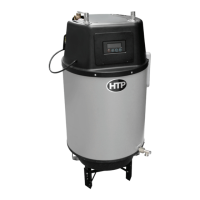
